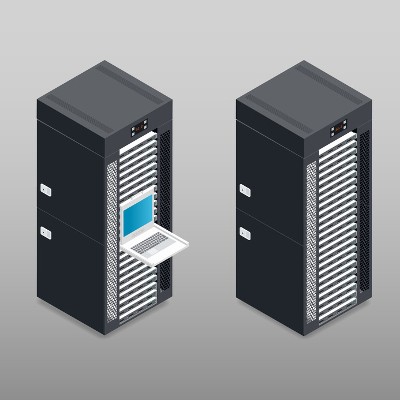NetWorthy Systems Blog
In 2011, the world was introduced to IBM’s supercomputer Watson after it handily won the television quiz show Jeopardy!. Since then, Watson has been utilized in a variety of helpful ways, including customer service for Macy’s and Geico, as well as medical research. Today, Watson is being tapped by H&R Block to assist the public with an issue that affects every American, their taxes.
You know better than anyone that managing your business isn’t something to be taken lightly. Keeping your technology in proper working order is just the icing on the proverbial cake, making the task of managing your business even more difficult. If you’re using normal break-fix IT services, this might be the case. Alternatively, managed IT services aren’t designed to burden you.
Have you ever tried to teach a kid how to do something? Chances are that if it’s not super fun and engaging, kids will probably ignore what you’re saying. While it might be difficult to emphasize the importance of a quality career choice to kids, you can get them moving in the right direction by teaching them valuable technology skills like programing and robotics. Thankfully, with educational apps and tools, this is much easier to accomplish than, say, ten years ago.
For the modern business it’s important to have software that is both simple to use and powerful enough to meet your needs. Nowadays, there are cloud-based platforms that come with storage, communication options, and many of the enterprise-level productivity applications that drive your organization’s productivity. Two of these, Microsoft’s Office 365 and Google’s G-Suite bring substantial value and flexibility to the table where there was once only expense.
You might use the Internet and connected technology for most parts of your life, but do you understand the finer details of how these devices work? How do they receive information that is stored so far away, perhaps on the other side of the planet? This is done via a web server, and it’s a fascinating piece of technology!
Business use IT more today than ever before, and this has led business owners, CIOs and IT managers to constantly search for ways to deliver organizational profitability through technology. They do this by attempting, sometimes futilely, to pinpoint issues with their overall business strategy and practices while discovering technology solutions that will help mitigate these problems. Typically, if an IT manager speculates that a technology implementation will reduce costs or improve productivity, those solutions find a way to be implemented.
How many people do you know that can be productive for 8 hours, or more, a day? It’s difficult for the average worker to do this, as their body needs time to relax and recover from the duress of the workday. Thankfully, new technologies provide some semblance of reprieve for office workers in the form of improving the way that they delegate and spend their breaks.
Technology is a critical component of the modern office, but it’s only a matter of time until it breaks down and leaves you in a bind. In a way, it’s a lot like owning a vehicle. You need it to get from Point A to Point B, but when it doesn’t work properly, it winds up costing you an arm and a leg. Worse yet, extended periods of not having transportation make it difficult to live life and go to work.
All businesses need to use some sort of technology to keep their operations moving forward. Yet, it’s often difficult to gauge how new solutions will function with your current systems. You need to take your options into careful consideration before making such an important choice, and only an analysis of your current setup will help you ensure the success of your new technology.
Analytics play a major role in today’s business world, but they are also pivotal to the development of artificial intelligence systems. One of the expected qualities of AI is machine learning, the ability for a system to identify and learn from trends. Yet, this extremely practical aspect of artificially intelligent systems may have its uses in a business setting.
Many websites and services now have apps that they use to further distribute their solutions via smartphone. However, when it comes to your business’s sensitive information, which is more secure: the mobile app, or the web-based client? Researchers from Northeastern University performed a study that asked this question, and the results might shock you.
When you’re planning your business’s technology ventures, how often does your IT budget become a major deciding factor? Chances are that it clings to you like a ball and chain. Wouldn’t it be nice to free yourself from something so limiting? We’ve compiled three ways that you can take some of the strain off of your IT budget.
Big data is a trend that’s gaining traction in the business environment. By taking a close look at the data that you collect, and identifying trends, you can potentially predict how your business can perform, and how your clients will respond to your products or services. Yet, there are two major questions that you need to ask: how are you going to use this data, and is the data that you’ve collected specifically to achieve that goal?
When it comes to buying technology, sometimes, despite the fact that the Internet offers a plethora of product reviews and detailed information for you to research to your heart’s content, it’s still possible to regret your purchase and decide to return it. In order to combat buyer’s remorse, more services are popping up that let consumers rent products before buying.
There’s a dangerous misconception that a lot of business owners have about data backup. Too often, an SMB will have a data backup solution in place and the business owner will feel like they’re fully prepared to handle a data loss disaster--without looking into the data recovery capabilities of their backup solution (or the lack thereof). This kind of oversight can lead to a very costly surprise when a disaster strikes and there’s no easy way to restore the lost data.
Intel recently announced their next line of laptop processors, and with that single act, caused no small amount of frustration and confusion among the IT market. After claims that they were breaking from their traditional schedule of releasing a new processor each September and improving upon it later, Intel has gone ahead and released a new processor architecture instead of maintaining their Skylake processor from last year.
Today’s fast-paced work environment demands multitasking and juggling various projects at once. Thankfully, there’s a lot of great technologies designed to make workloads more manageable. If you’ve not yet looked into utilizing automation apps for your business, you may be surprised to learn how they can improve efficiency.
The benefits of utilizing smartphones in the workplace are many and obvious. Yet, it may be in the best interests of some companies to ban smartphones altogether, and instead go with older-model flip phones. As counterproductive as this sounds, more companies are saying “out with the new in with the old.”
Businesses rely on hardware, like workstations, servers, mobile devices, and more, to keep operations moving forward. However, managing these knowledge-intensive machines can demand time and resources that are finite for SMBs. If you’re challenged by the management and deployment of hardware, let us guide you through the process of doing so.




















